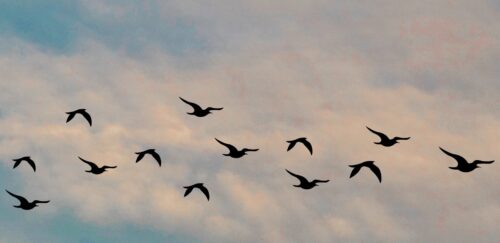Ladybird is one uncommon compound word made by the union of two simple common words – Lady and Bird. But, the two simple words when joined together can produce strange effect.
Well, the ladybird is neither a lady nor a bird. It is common name of an insect which is very important in controlling aphids and many other insects that damage our crops.
Thus, ladybirds are insects that can be employed for controlling many small insects that damage our crops and orchards. You may call them natural bio- insecticides.
What is a ladybird?
The ladybird is a cleaver little creature. It looks like a red pill with black spots on it. If you disturb it, it will fold up its legs and drop as if dead. It will remain in this attitude of rigid death for at least a minute or two and then will begin to claw the air with all its six legs in its effort to turn right side up.
Body of the ladybird
There are many species of ladybirds, but all of them resemble a tiny pill cut in half, with legs attached to the left side. Sometimes it may be a round and sometimes an oval pill, but it is always shining and the colours are always dull dark red, or yellow, or whitish, and black.
Sometimes she is black with red or yellow spots, sometimes red or yellow with black spots and the spots are usually on either side of the thorax and one on each snug little wing cover.
If we look the ladybird carefully, we can see the head and short cube like antennae. Behind the head is the thorax with its shield, broadening towards the rear, spotted and ornamented in various ways.
The head and the thorax together occupy scarcely a fourth of the length of the insect, and the remainder consists of the hemispherical body, encased with polished wing covers.
Movement of the Ladybird
The little black legs of ladybird are quite efficient because they can be moved very rapidly. However, these are not the only means of locomotion of a ladybird. She is a good flier and has a long pair of dark wings which she folds crosswise under his wing covers.
It is comical to see her pull up her wings, as a lady tucks up a long petticoat.
The ladybird takes very good care of herself and spends much time in washing up. She begins with her front legs, cleaning them with her mandibles, carefully nibbing off every grain of dust. After this she cleans her middle and hind legs by rubbing the two on the same side back and forth against each other Each leg acts as a whisk broom for the other. She cleans her wings by brushing them between the edges of the wing cover above and the tarsus of her hind leg below.
Importance of Lady Bird
Ladybird is of great value from our standpoint. These insects feed upon those insects that damage our crops and orchards.
Lady Birds are usually fond of aphids and scale insects. Larvae of ladybirds are very different from their parents. They crawl around on plants and chew up all the aphids or the scale insects. Adults too eat away all the aphids and scale insects that damage our crops.




